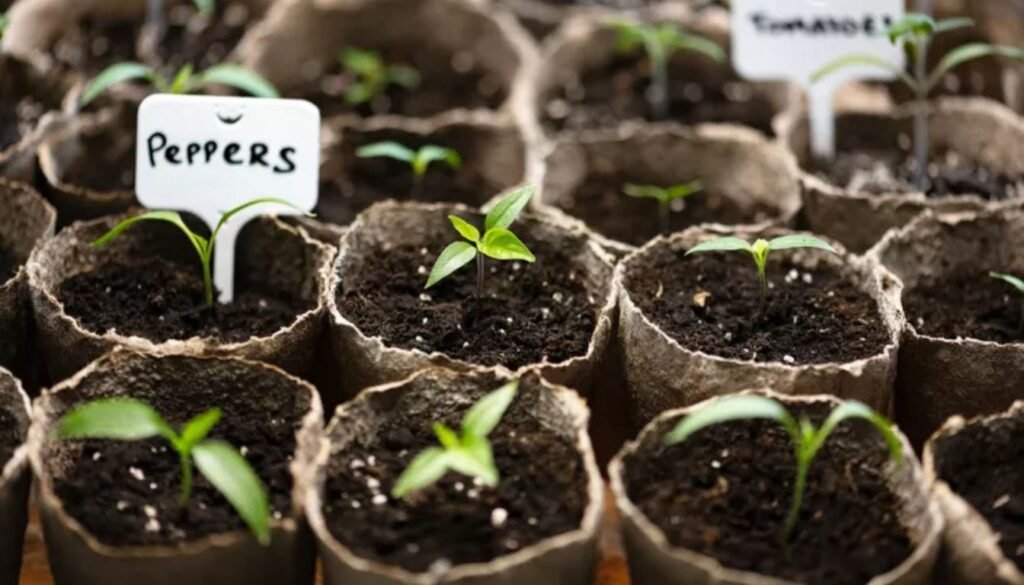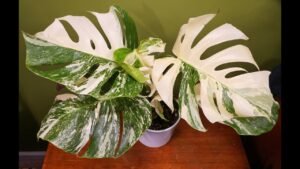Spring is upon us, and it’s the perfect time to give your garden a head start by sowing seeds indoors. Utilizing a high-quality seed starting mix will provide your seedlings with the ideal environment for robust growth. Below is a curated list of vegetables, herbs, and flowers to begin indoors now, ensuring they’re primed for transplanting in May.
Vegetables
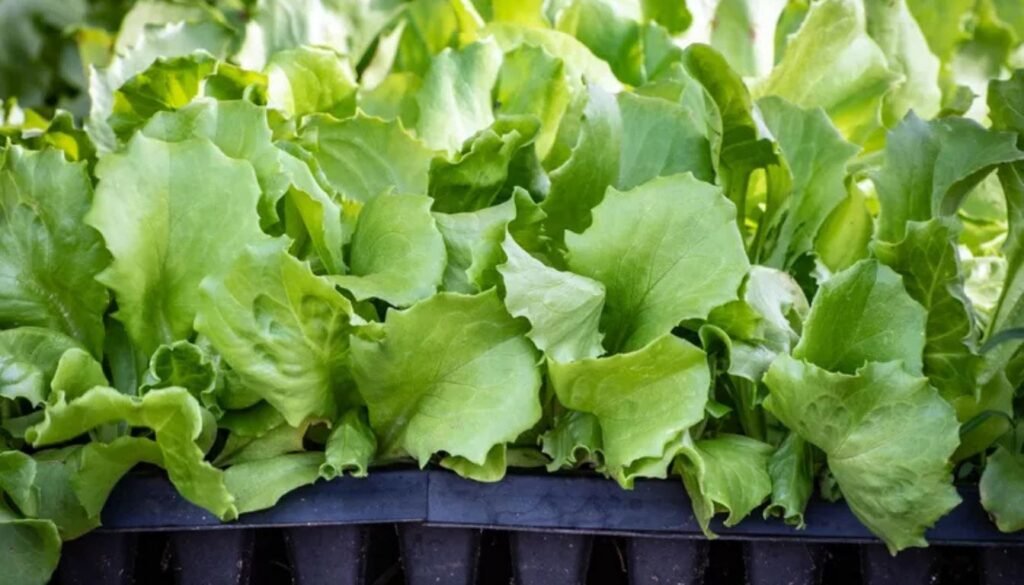
1. Tomatoes
Varieties to Consider: Cherry, Beefsteak, Roma
Germination Time: 5–10 days
Transplanting Tips: Start seeds indoors 6–8 weeks before the last expected frost. Once seedlings have two sets of true leaves and outdoor temperatures remain above 50°F (10°C), harden them off over a week before transplanting.
2. Peppers (Bell & Hot)
Varieties to Consider: California Wonder (Bell), Jalapeño (Hot)
Germination Time: 7–14 days
Transplanting Tips: Peppers thrive in warmth. Begin seeds indoors 8–10 weeks before the last frost. Transplant when nighttime temperatures consistently stay above 55°F (13°C).
3. Eggplant
Varieties to Consider: Black Beauty, Ichiban
Germination Time: 7–14 days
Transplanting Tips: Start seeds indoors 8–10 weeks prior to the last frost. Transplant when soil temperatures are consistently above 60°F (16°C).
4. Broccoli
Varieties to Consider: Calabrese, Waltham 29
Germination Time: 5–10 days
Transplanting Tips: Sow seeds indoors 4–6 weeks before the last frost. Transplant seedlings outdoors when they are 4–6 weeks old, and the soil is workable.
5. Cauliflower
Varieties to Consider: Snowball, Purple Head
Germination Time: 5–10 days
Transplanting Tips: Begin seeds indoors 4–6 weeks before the last frost. Transplant when seedlings have 4–5 true leaves, ensuring consistent moisture.
6. Cabbage
Varieties to Consider: Golden Acre, Red Acre
Germination Time: 4–10 days
Transplanting Tips: Start seeds indoors 6–8 weeks before the last frost. Transplant when seedlings are 4–6 weeks old, spacing them 12–24 inches apart.
7. Lettuce
Varieties to Consider: Butterhead, Romaine
Germination Time: 7–10 days
Transplanting Tips: Sow seeds indoors 4–6 weeks before the last frost. Transplant seedlings when they have 3–4 true leaves, spacing them 6–12 inches apart.
8. Kale
Varieties to Consider: Lacinato, Red Russian
Germination Time: 5–8 days
Transplanting Tips: Begin seeds indoors 4–6 weeks before the last frost. Transplant when seedlings are 3–4 inches tall, spacing them 12–18 inches apart.
9. Spinach
Varieties to Consider: Bloomsdale, Baby’s Leaf
Germination Time: 7–14 days
Transplanting Tips: Start seeds indoors 4–6 weeks before the last frost. Transplant when seedlings have at least two true leaves, spacing them 6 inches apart.
Herbs
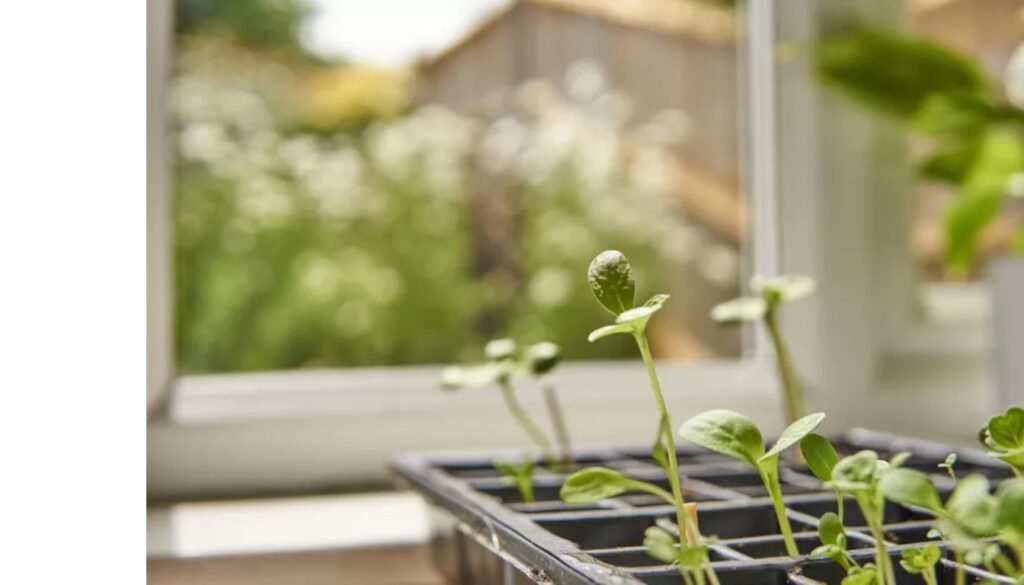
10. Basil
Varieties to Consider: Genovese, Thai
Germination Time: 5–10 days
Transplanting Tips: Sow seeds indoors 6–8 weeks before the last frost. Transplant after all danger of frost has passed, spacing plants 12 inches apart.
11. Parsley
Varieties to Consider: Curly Leaf, Italian Flat Leaf
Germination Time: 14–21 days
Transplanting Tips: Start seeds indoors 8–10 weeks before the last frost. Transplant when seedlings have 3–4 true leaves, spacing them 9–12 inches apart.
12. Chives
Varieties to Consider: Common Chives, Garlic Chives
Germination Time: 7–14 days
Transplanting Tips: Begin seeds indoors 6–8 weeks before the last frost. Transplant clumps of seedlings together, spacing them 6–8 inches apart.
13. Oregano
Varieties to Consider: Greek, Italian
Germination Time: 7–14 days
Transplanting Tips: Sow seeds indoors 6–8 weeks before the last frost. Transplant when seedlings are 3–4 inches tall, spacing them 12 inches apart.
14. Thyme
Varieties to Consider: English, Lemon
Germination Time: 14–28 days
Transplanting Tips: Start seeds indoors 6–8 weeks before the last frost. Transplant when seedlings are 3 inches tall, spacing them 12 inches apart.
Flowers
15. Marigolds
Varieties to Consider: French, African
Germination Time: 5–7 days
Transplanting Tips: Sow seeds indoors 4–6 weeks before the last frost. Transplant after the last frost, spacing plants 8–10 inches apart.
16. Zinnias
Varieties to Consider: California Giant, Thumbelina
Germination Time: 5–7 days
Transplanting Tips: Start seeds indoors 4–6 weeks before the last frost. Transplant when seedlings have two sets of true leaves, spacing them 6–12 inches apart.
17. Cosmos
Varieties to Consider: Sensation Mix, Seashells
Germination Time: 7–10 days
Transplanting Tips: Begin seeds indoors 4–6 weeks before the last frost. Transplant after the last frost, spacing plants 12–18 inches apart.
18. Nasturtiums
Varieties to Consider: Empress of India, Jewel Mix
Germination Time: 7–14 days
Transplanting Tips: Nasturtiums don’t love transplanting, so start them in biodegradable pots filled with a rich, seed starting mix. Begin 4–6 weeks before your last frost, and plant the entire pot into the ground once outdoor conditions are warm and frost-free.
✅ Why Seed Starting Mix Matters
Using a high-quality seed starting mix isn’t just a gardening trend—it’s a necessity. Unlike garden soil, a seed starting mix is:
- Sterile – Minimizes the risk of damping off disease and other fungal problems.
- Lightweight and airy – Encourages delicate roots to develop easily.
- Moisture-retentive but well-draining – Keeps seeds hydrated without drowning them.
Look for mixes made with peat moss, coconut coir, perlite, and vermiculite. Avoid heavy garden soil for starting seeds indoors—it can compact and prevent germination.
Pro Tip: Moisten your seed starting mix before filling your trays to ensure even hydration and easier seed placement.
🌱 Seed Starting Checklist
✅ Clean seed trays or pots
✅ Sterile seed starting mix
✅ Quality seeds (check expiration!)
✅ Plant labels
✅ Humidity dome or plastic wrap
✅ Grow lights or sunny windowsill
✅ Heat mat (for warm-weather crops like peppers & eggplant)
🌤️ When to Transplant
Once your seedlings have at least 2–3 sets of true leaves, begin hardening them off—gradually introducing them to outdoor light and temperatures over 7–10 days. By May, most of these plants will be ready for the garden.
❓FAQs: Indoor Seed Starting for May Planting
Q1: What is a seed starting mix, and why should I use it?
A: A seed starting mix is a lightweight, sterile growing medium specifically designed for germinating seeds. It promotes healthy root development, prevents damping-off disease, and holds moisture without compacting—unlike regular garden soil.
Q2: Can I use potting soil instead of seed starting mix?
A: While potting soil may work for some plants, it’s often too dense for delicate seedlings. For the best results, stick to a dedicated seed starting mix, which allows for better drainage and root aeration.
Q3: How early should I start seeds indoors?
A: Most seeds should be started 4–10 weeks before your last frost date. Check the seed packet for specifics, and use our list to prioritize what to start now for May transplanting.
Q4: Do I need grow lights to start seeds indoors?
A: If you don’t have a bright, south-facing window that gets at least 8 hours of light, yes—grow lights are recommended. They prevent leggy growth and ensure healthy, compact seedlings.
Q5: How do I transplant seedlings in May?
A: Harden off seedlings for 7–10 days by gradually exposing them to outdoor conditions. Then plant them in your garden when temperatures are stable, following spacing and sunlight requirements for each plant.
🌿 Pro Tip: If you’re new to indoor gardening, check out our DIY seed starting mix recipe to get started right.
❌ Avoid these common seed starting mistakes that even experienced gardeners make.
💡 Planning to use lights? See our best grow lights guide for strong, healthy seedlings.
👩🌾 Final Thoughts
Starting seeds indoors now sets you up for a thriving garden by late spring. Whether you’re dreaming of juicy heirloom tomatoes, fragrant herbs, or cheerful blooms, the key to success is timing and using the right materials—especially a good seed starting mix.
By investing a little time and care now, you’ll have strong, transplant-ready seedlings just in time for May planting. Happy growing!

